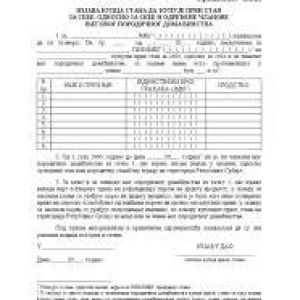Here we can look at Old Age Security (OAS) and the Guaranteed Income Supplement (GIS) and how to balance them with your CPP and RRSP to maximize the money you get.
To collect GIS with a spouse, your combined income needs to be less than $27,522. You can still contribute to your RRSP to lower the income below that threshold if you are close. However, doing that will more than likely mean your income will be above the threshold once your RRSP becomes a RIFF at the end of your 71st year. Here is a page with more information on the thresholds: https://www.canada.ca/en/services/benefits/publicpensions/cpp/old-age-security/guaranteed-income-supplement/benefit-amount.html
When is the right time to claim your Old Age Security and how does the Guaranteed Income Supplement fit into that equation? This is going to be good if you're a senior in Canada. Old Age Security or OAS is a program you really need to know about. It provides basic monthly income to those 65 and over who qualify of course for the program. To be eligible you need to be:
- 65 years old
- Canadian Citizen or Legal Resident
- Lived in Canada for at least 10 years after the age of 18.
If you live outside of Canada, you must have been a Canadian citizen or a legal resident and lived in Canada for at least 20 years after the age of 18. (instead of 10)
Good news for Canadian workers abroad, your time outside of Canada working for a Canadian employer can count towards the residency requirement if you return to Canada within six months of ending your employment.
In addition to OAS there's the Guaranteed Income Supplement or GIS which is an extra income boost for low-income seniors to be eligible for GIS you must be:
- 65 years old
- You must be receiving OAS
- You need to have an income below a specific threshold. If you are single you could make up to $1,026.96 per month on GIS. if your yearly income is less than $20,832 starting January 1, 2023. If you have a partner the amount can range from $618.50 to $1,026.96 depending on whether they're receiving OAS or the allowance. The allowance is a benefit for partners between 60 and 64 years old if their significant other is on GIS. OAS amounts are adjusted quarterly for inflation and can even increase if you delay taking your OAS (OAS increases: -Quarterly to reflect CPI, -If you delay taking your OAS) with the base maximum $687.56 or $756.32 if you are over 75 years old.
The base amount of OAS you receive depends on the number of years you lived in Canada after the age of 18. So, if you lived in Canada for 40 years after the age of 18, you'll receive 100% of your OAS while if you only lived in Canada for 10 years you will receive 25% of that maximum amount. For 20 years in Canada, you will receive 50% of the maximum amount. If you take a number of years that you have been in Canada and divide it by 40 that will tell you what your base amount is going to be up to a maximum of 100%. (OAS= Number of Years in Canada / 40).
$86,912 OAS Claws
Back $0.15 for each dollar-2023 for this 2023 year
GIS is only payable to Canadians residents. If you decide to live abroad, you are only entitled to the GIS for the month of your departure from Canada and the following six months. The OAS pension is the same unless you have lived in Canada at least 20 years after age 18, then you can receive it abroad indefinitely.
When to take your OAS is a complex decision that requires looking at your income and other factors. If you make over $86,912 in 2023 you will have some of your OAS Clawed back 15 cents for every dollar you make over the threshold. If you're low income, you'll need to factor in your access to a GIS and whether taking your OAS at 65 is your best option. The best course of action for you is going to depend on your personal circumstances. So, it's important to take a balanced approach considering when to take your OAS.
To know when to take OAS we need to first look at your income.
Working income
Higher income you want to avoid OAS Claw Back ($86,912 in 2023)
One of the things we want to avoid if possible is an OAS Claw Back. If you are making more than $86,912 in 2023 you will lose some of your OAS. The way it works is that they will take back 15 cents for every dollar you make above the threshold.
If you are low income, Claw Back is not even on your radar.
Avoid going over the GIS threshold ($20,832 in 2023)
In that case you are thinking about whether you can get the GIS. This is when you need to figure out what is going to make sense. If you cannot make ends meet, then taking your OAS and GIS if you qualify. Of course, is simply a no-brainer outside of that situation and this is where some balancing may come in OAS and the Canada Pension Plan or CPP. Income-CPP-OAS-GIS-RRSP/RRIF.
Both count as income when making the calculation for whether you qualify for GIS or also calculating if you are going to receive Claw Back at 65. If you are still working, you need to take that income into account as well. So, if your working income will result in Clow back it almost guarantees that you should defer until you are no longer working and then recalculate if you are not yet 70. getting back to low income. If you're not working, then it may make more sense to take your OAS at 65 to gain access to that GIS.
5 Years of GIS: $37,089.00 to $61,617.60
In that specific case deferring five years is a lot of GIS money that you have lost and that can push your even way up there. In this case it could make more sense to defer your CPP especially if it will impact your GIS but keep in mind the increased CPP at 70 will impact it even more but overall living expenses are less as you move into your 70s and 80s.
At 71(end of year) RRSP becomes RRIF Yearly minimum withdrawal amount just over 5% first year.
There is another player you do have to consider and that is your RRSP which at the end of your 71st year will get turned into that RRIF. At that point you have a minimum withdrawal amount that begins just above 5% then increases each year until it maxes out at 20 when you reach 95. It is not a linear rise as it does speed up as you get older. This minimum withdrawal is 100% taxable.
RRIF Withdrawals are 100% taxable income.
One strategy for retirement, if you have a full RRSP is to delay both your OAS and CPP and start using the RRSP before it turns into an RRIF. Now getting some of that income out to live off and thus increasing how much it will be when you hit 70 than start with your higher CPP and OAS. Naturally, in this case you would want to work out the math because the amount of math involved there is never going to be a one answer that fits all solution. The best you can do is play with the numbers and look for the solution.
That keeps the most money in your pocket, the key if you are on the lower income spectrum is to try and keep your income down below $20,800.132, so you can get the GIS that could even mean not taking a part-time job that would bump you over that amount. It really comes down to maximizing what you can get back. Another scenario is if you did delay your CPP or your OAS or even both and that extra increase, then pushes you over the GIS threshold once you hit 70. In that scenario hopefully you have funded your RRSP because then you can make up for the missing GIS with your RRIF. When it comes to higher incomes and people with more resources than it could very well make sense to delay both or at least the CPP. The CPP does have Survivor benefits attached to the OAS, so if you were only going to delay one of our benefits then it would make more sense to make it the CPP. So, that way there you can increase the amount that you're going to leave behind to your Survivor. You can still use your RRSP up to 71. Strategic RRSP between 65 and 71. If you are making a way bit too much to qualify for the GIS, yes you can always contribute more to your RRSP to lower your income below that threshold. This is only a short-term fix as that option will vanish once your RRSP becomes an RRIF.
OAS is not counted towards calculating the threshold.
Employment income after all deductions plus CPP will be taxable, plus will be considered for qualification for GIS. OAS is taxable but is not a part of qualifying for GIS. GIS is not taxable and is not a part of qualifying for GIS. If you're qualifying income from the previous year is only slightly above the qualifying amount, you lose all GIS, not just a part of it.
In addition, the TFSA is 100% tax free so any passive income you have flowing from it would not count as income at all.
At a very low income you can expect roughly $700 OAS and $340 GIS monthly. You can use the following estimator to get a more personalized amount: https://estimateursv-oasestimator.service.canada.ca/en/results
With CPP, it will be highly dependent on how much you paid in over your entire working career. Service Canada can let you know how much that will be through their website.
There are just so many permutations and ways that you can balance this will say right now that if you are not a fan of math you may want to consider Consulting a Financial Advisor or a Retirement Planner to work out the numbers for your specific situation, your golden years income.











